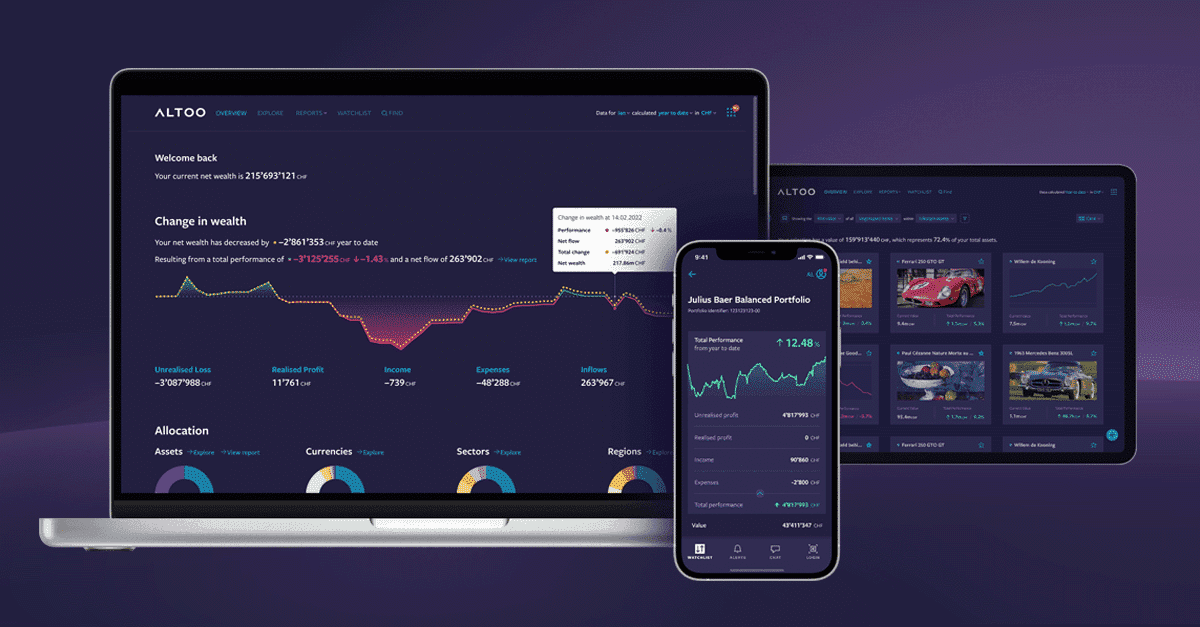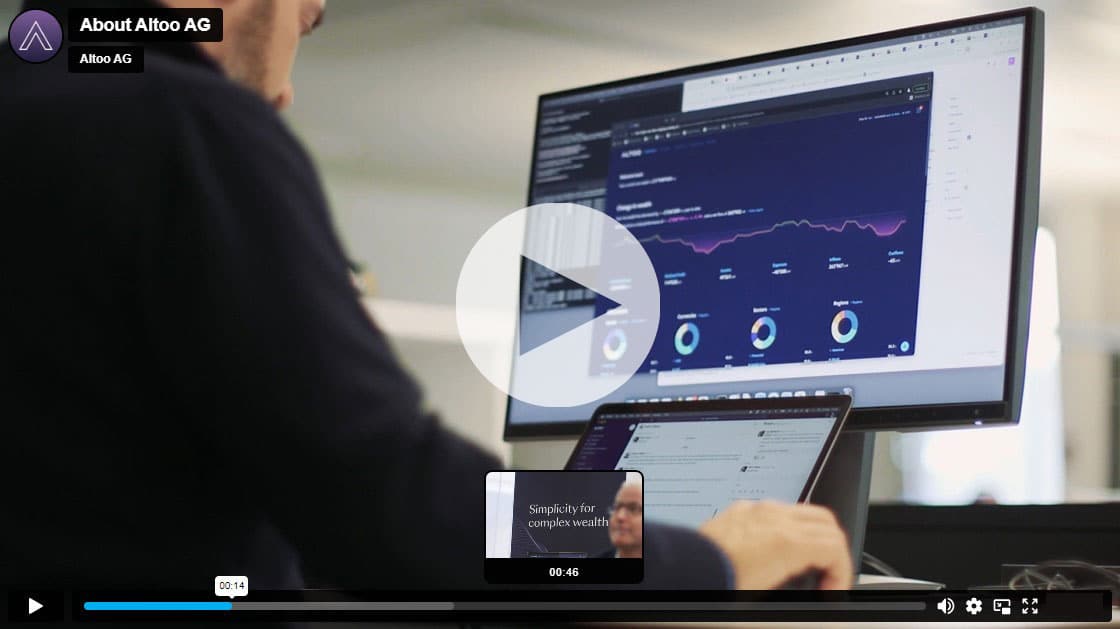The top 2022 Wealth Management Technology Trends

Now that we are more than halfway through 2022, we look back on some of the most exciting global trends in wealth management. These three investment industry trends have shaped the asset management sector over the past 12 months, and it will be exciting to see how they continue to change, develop and improve in 2023.
01- Data and Artificial Intelligence (AI) make hyper-tailored predictions easier
Asset management industry trends highlight how big data is a key part of modern life, and wealth management technology software uses it to improve the experience. By using historical information surrounding interests, goals, behavior and past investment decisions, it’s easier for wealth managers and financial planning platforms to provide hyper-tailored advice that responds to the market.
Open banking initiatives and APIs make it easy to securely access data about existing wealth and investment portfolios, feeding it into applications to ensure information is always up to date and accurate. And finally, the ability to assess asset management industry trends through Artificial Intelligence analysis also improves the ability of advisers and machine learning software to assess the market and provide in-depth insight – in real-time.
02- Cyber security infrastructure is the top priority for wealth management technology
While the collection of user data has its benefits in terms of personalization, it does come with the risk of breach. Business and individuals are both potential targets for cyber-criminals, which is why 2022 saw robust cyber security measures become a top priority for wealth management technology organizations.
Elevate Your Wealth Game: Empowering UHNWIs for Simplified Asset Management. Altoo Platform Preview
“The days of managing and tracking wealth through spreaheets are well and truly over. Thanks to exciting evolutions in wealth management technology, it is easier to not only monitor and manage everything in one place – but to analyze and understand it, too.”
The use of tools such as multi-factor authentication – for example, entering a code from a mobile after entering a password on a desktop – is helping to reduce the chance of hacking and impersonation. Voice and face ID are also valuable tools to weed out imposters on mobile apps.
On a more physical point, many firms are choosing where they are based wisely. Altoo, for example, is hosted in Switzerland. This neutral European country famously has a high level of privacy protection, along with an exceptional internet infrastructure leading to impeccable performance of servers in its data centres.
03 – Front-end interfaces and more powerful tools are making it easier for individuals to personally monitor their wealth
In the past, wealth owners would have to read large cumbersome reports filled with industry jargon to understand their portfolio. The latest trends in wealth management show a shift towards wealth management technology products and services with a move towards human-centred design. Easy-to-use platforms – like Altoo – are designed to make consolidating and interacting with wealth effortless. Everything is brought together in one intuitive platform – not only the bankable and non-bankable assets and their key metrics like performance and values but also important documents, notes and secure communication tools and, because it’s online, that information is up to date and available 24 hours a day.
Are you ready to embrace a flawless wealth management technology platform?
If you want to explore how evolving wealth management technology can help you to manage your complex investment portfolio, try Altoo. The first wealth management platform designed and built especially for wealth owners and family offices, its intuitive design avoids complex industry terms and uses simple visuals to make wealth planning and asset management easy.
If you would like to learn more about Altoo’s wealth management technology, contact us today.

















